CATTLEMEN’SDAYS





















































































Gunnison Valley. As keepers of the event known as the granddaddy of Colorado rodeos, our Cattlemen’s Days Committee, community, volunteers, athletes and livestock are proud to welcome you to the 2023 Cattlemen’s Days celebration! This year’s theme is “The Cowboy in Us All.”
After 123 years of Gunnison Cattlemen’s Days Rodeo, we keep bucking, roping and riding, celebrating the long- kept traditions of ranching, and the western way of life in the
Gunnison Cattlemen’s Days is the best “small town, big time” rodeo with the #1 Tough Enough to Wear Pink (TETWP) Rodeo in the PRCA. TETWP has been part of the Gunnison Valley for 18 years now, each year adding meaning to “small town, big time.” Through our events and concerts, the bigtime talent and unmatched
community support, Gunnison TETWP is a one-of-a-kind organization, comparable to few programs around the world. Thank you for helping us bring comprehensive cancer support to this community, including, education, prevention, financial assistance and a long list of patient support programs — not just for breast cancer, but for all cancers.

One tradition over the years that Cattlemen’s Days proudly upholds is the awarding of college and youth scholarships, encouraging students in their pursuits and honoring the next generation that keeps our ranching traditions alive.
Check out your rodeo this
year as part of the “Hometown Rodeo” series on the Cowboy Channel, featuring the top cowboys, cowgirls, stock and specialty acts in the PRCA.
A 123-year-old rodeo would not be possible without our hundreds of volunteers that make every event a success to add to our history. Our hats go off to all of them in heartfelt thanks.
Keep the traditions alive. Let’s rodeo Gunnison!
(Mike Dawson is president of the Cattlemen's Days Committee.)
July4thPINKAPALOOZA4thofJulyBenefitConcertIBarRanch ChanceyWilliams|WardDavis|LocalSongwriters|Camping|Fireworks

Publisher and editor Alan Wartes

Editorial Bella Biondini Mackenzie Bode
Mike Dawson

Abby Fostveit
Ted Harbin
Hannah Kersting
Perri Pelletier
Advertising sales Bobbie Corn Jack Anderson
Steve Nunn
Production
July6thSongwriterShuffleDoubleTopRanch,CrestedButte,CO Nashville'sfavoritesinger-songwriters,thevalley'sbestchefs,auctionandmore!

July13thCattlemen'sDaysRodeoTETWPNightGunnisonFairgrounds


#1PRCAToughEnoughtoWearPinkRodeoattheGrandaddyofColoradoRodeos!



July13thParkingLotParty5B'sBBQ

JoinusfortheTETWProdeoAFTER-PARTYwithlivemusicfromAustinWahlert!



Cattlemen’s Days Tough Enough To Wear Pink (TETWP) is pleased to announce that the Dean Dillon Gunnison Tough Endowment Fund has been established as a component fund of the Community Foundation of the Gunnison Valley (CFGV).

It all started in 2005, when some of the Cattlemen’s Days rodeo committee members, Kevin Coblenz, JimmyClark, Jim Swaim, Selma Eastman and Edie Gibson, decided to embrace the TETWP national cause by designating one night of the PRCA Rodeo to raise funds for breast cancer.
Eighteen years later, this organization is the biggest TETWP fundraiser in the nation and has expanded its programs to serve all types of cancers in our valley.
TETWP is dedicated to providing comprehensive support to the Gunnison Valley community in the fight against cancer. Breast cancer is the primary focus, but local programs are now open to people who are diagnosed with any type of cancer.
Early on, country music icon Dean Dillon became a leader and a visionary for the organization in our community and defined many of the goals that TETWP set forth in the Gunnison Valley. Dean was inducted into the Country Music Hall of Fame in 2020 and has written over 87 songs for the legendary George Strait, and is the writer of the 15-time platinum song “Tennessee Whiskey,” the biggest song of his career.
After meeting the love of his life, Susie Dillon, Dean was searching for a second home in her hometown that would be a quiet escape from the Nashville music scene and for them to spend quality time together. Th ey settled on a ranch in Gunnison. The unexpected and tragic death of Dean and Susie’s friend, Jimmy Clark, in a rodeo accident, and the passion of the TETWP committee, sparked them to get involved in a major way and transform a modest fundraiser into the perennial top TETWP fundraiser in the nation, all through the help of selfless volunteers and donors.
Over the years, Dean and Susie have invited their musical family, the best of Nashville songwriters, to come here and perform, to raise money for this cause. It is a beautiful success story for all of us to live and enjoy while making a difference

for our friends and neighbors.
“I want our local hospital to be the best rural small town breast cancer hospital in the U.S.,” Dillon said. “I do not want anyone going through cancer to be worried about losing their house while they go through treatments. We need to alleviate stress from their lives so they can focus on getting better and beating cancer.”
Early detection is key, and Dean wanted Gunnison Valley Hospital to have the best equipment and physicians, so people could be screened and cared for here in our valley.
"We're thrilled to partner with TETWP to provide long term fi nancial stability for the organization and honor the tremendous contributions Dean and Susie Dillon have made to the Gunnison Valley," said CFGV Executive Director Lauren Kugler. "An agency endowment like the Dean Dillon Gunnison Tough Endowment Fund provides the foundation for a permanent, stable source of funding for an organization's operations and programs."
Dean and Susie DillonI want our local hospital to be the best rural small-town breast cancer hospital in the U.S.
Dean DillonCourtesy
Josh Brockschmidt purchased his steer Russell for just under $1,000 in the fall of 2021, right before the start of the 4-H livestock program. After the annual Cattlemen’s Days Junior Livestock Auction in July, he had multiplied his original investment, receiving almost $20,000 for the grand champion steer.

But the work wasn’t easy. Brockschmidt had just entered his senior year of high school, and balancing homework, college preparation and sports made it an extra challenge. He didn’t have a background in caring for livestock, yet he
was determined to raise and present a perfect steer at the rodeo auction — often up before dark and awake long after the sun went down at Russell’s side.
For 4-H members who undertake animal projects, the goal is to make back the money they spend on their animals, and have the funds to proceed with another the following year. Although raising and training an animal to sell at the annual livestock auction can be full of learning curves, the lessons participants learn alongside their animals — whether steer, sheep, goats, rabbits, pigs, chickens or even llamas — are invaluable.

continued on 7
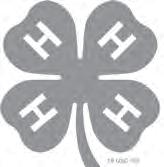 Bella Biondini
Don and Shelly Sabrowski stand with Josh Brockschmidt and his winning steer at the 2022 Cattlemen’s Days Junior Livestock Auction.
Courtesy Gunnison County Extension
Bella Biondini
Don and Shelly Sabrowski stand with Josh Brockschmidt and his winning steer at the 2022 Cattlemen’s Days Junior Livestock Auction.
Courtesy Gunnison County Extension
Months passed as Russell grew larger and the pair learned together. Brockschmidt walked him each day so the steer could build muscles and not put on fat too quickly. He also spent time on showmanship by putting a halter on Russell and practicing with his show stick in the backyard pen. Brockschmidt styled the animal’s hair and taught Russell how to stand with his legs squared, all in preparation for the big day at Cattlemen’s.
Brockschmidt was always interested in learning how to raise cattle, but as a senior, he realized he was running out of time. He finally got the opportunity when he started working with Don Sabrowski and his wife, Shelly, at Wilder on the Taylor, who guided him through the process. Prior to the auction, the Sabrowskis got all of the property’s homeowners to donate money to purchase his steer, which now weighed more than 1,100 pounds.



“They did that without telling me,” Brockschmidt said. “It was really cool to make that much money off of the livestock auction, because that paid for my entire first year of college. That was really big.”




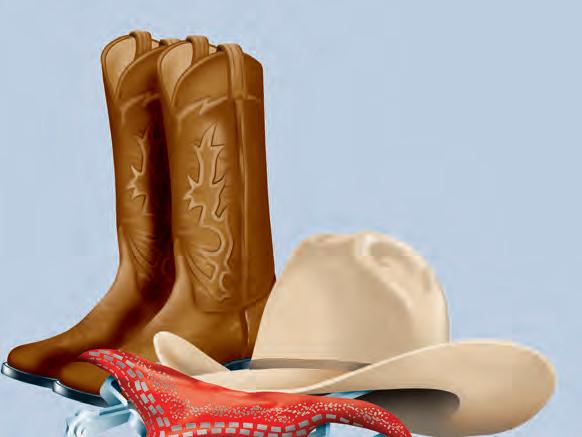


Unlike applying for college scholarships, raising an animal can be a gamble, said Perri Pelletier, Gunnison County’s 4-H youth development agent. Most projects have to meet a minimum weight to qualify for the auction.




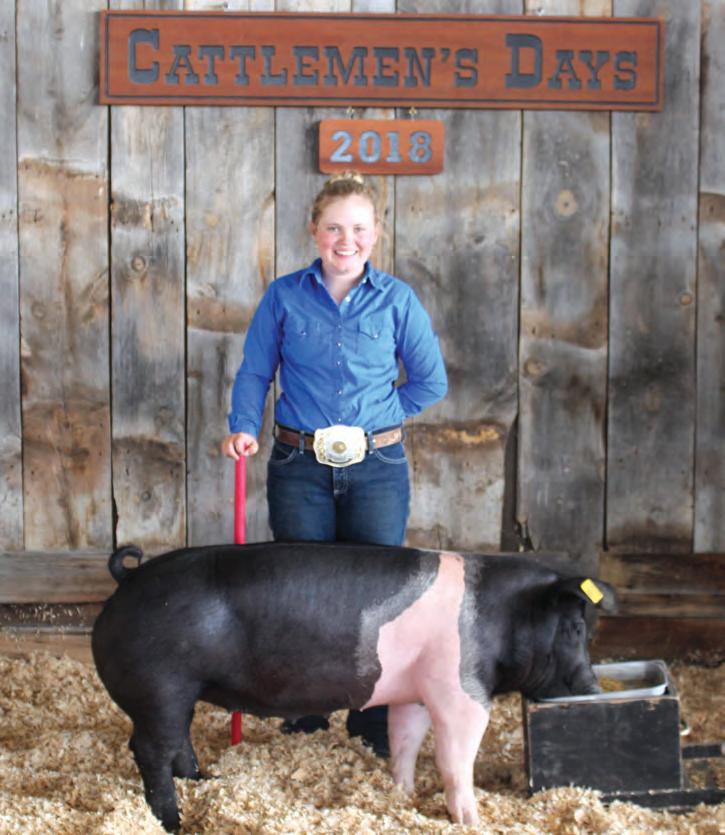
“If you don’t make weight, you can’t sell it ... When you're raising an animal, it's a lot of work over a long time,” Pelletier said. “We've had a continued



lot of parents talk about a member’s personal responsibility growing by leaps and bounds, because kiddos have to get up before school and feed the animals. Having that happen, even once in their life or year after year is really important in developing their work ethic.”
Kids usually obtain their animals in the spring (except steers which are purchased in the fall) and must care for them until the arrival of the auction in July. Members are responsible for feeding them and taking care of any veterinary needs, as well as learning safe handling techniques.
Parents who are unfamiliar with the process are often filled with the same questions as their children: What size pen is needed? What kind of feed do I need, and where can I get it? Does the animal need its hooves trimmed? What do you do with their ears?
While steer and swine can reach hundreds, and even top a thousand pounds, rabbits and poultry are more accessible for those who have never worked with livestock before. Members can also raise companion rabbits that won’t be sold for meat, show guinea pigs, pack goats or even cats.
At the auction, most animals will be sold by the pound to buyers. Although kids are sometimes nervous to go in front of the crowd, the room is usually energized and filled with excitement as the bid taker watches for hands to go up.
The following morning, most of the animals are loaded onto a truck, where they will then be transported to a meat processor — a day that can be difficult for some 4-H members. But these discussions start long before the auction, shedding light on how the food cycle works, Pelletier said.
“If we eat meat, we need to be honest about where it comes from,” she said. “That comes through in discussions with kids right at the beginning of the project. But that doesn't mean it's easy.”
Former 4-H member Lily Redden said that while she sympathized with friends who were upset when they had to part with their animals, she was able to see the bigger picture. All of Redden’s profits went into a savings account that she used to pay for her first car and put toward college expenses.


“I liked watching all of my hard work come to fruition,” she said.
The auction, which coincides with the excitement of Cattlemen’s Days, is also a family affair for many in the Gunnison Valley community. While some, like Brockschmidt, are new to livestock projects, showing animals is a tradition parents pass down to their children.
Redden showed market swine for nine years, following in the footsteps of her older sister. She said all of her best memories growing up happened at Cattlemen’s Days when showing either her pigs or her horse. Since she finished with the 4-H program, she has returned to Gunnison each summer to help with the sale.

“The memories that I have from that and the sale have definitely positively impacted my life and how I remember growing up,” she said.
(Bella Biondini can be contacted at 970.641.1414 or bella@gunnisontimes.com.)





 Hannah Cranor Kersting
Hannah Cranor Kersting
















The animals for sale at the Gunnison Cattlemen’s Days Junior Livestock Auction showcase local 4-H and Future Farmers of America (FFA) members and the hard work they put in all year long. The kids are dedicated to their animals, and participation allows them to learn many valuable life lessons. The 4-H and FFA members must take care of their animals each and every day, which teaches them animal husbandry skills such as feeding, animal health care and proper handling techniques.
Selling the animals at auction is a valuable source of support for the young ag producers. They may use the proceeds how they see fit. Most start an education fund or use the money to support a new project the following year. The buyers’ dedication to the youth in 4-H and FFA help them prepare for their future. In return, buyers can be assured they are purchasing the highest quality product. All animals must meet “Wholesome Meat Animal Standards,” and all program members are trained in “Meat Quality Assurance” methods. Buyers also receive public recognition for their purchases.
Many different animals are sold at the junior livestock sale including beef, sheep, goats, poultry and rabbits. Our livestock sale is similar to other auctions. Animals are sold by the pound. For example, a 100-pound lamb at $12.50 per pound would sell for $1,250. Buyers can collaborate and bid in groups if they wish. Processing costs are also paid by the buyer.
After the auction, animals are transported to the processor of the buyer’s choice — Homestead Meats in Delta or Kinikin Processing in Montrose. When complete, the processed meat is delivered to the Fred Field Western Heritage Center for pickup. Payment is due at that time.
For people who want to support the kids, but do not want the meat, a couple of options are available.
It’s important for buyers who are considering this choice to understand two definitions. “Purchase price” is the amount the buyer pays at the junior livestock auction. “Market price” is the current value of that animal if it were to be sold at a commercial livestock is market price is printed in the sale brochure provided on the day of the sale.
One option for those who don’t want the meat is to donate the animal to one of two entities. The first is the 4-H program itself, and proceeds will benefit 4-H youth in Gunnison County for many years. The animal’s market value becomes a charitable donation.
Second, the animal may be given to the Gunnison Country Food Pantry as a charitable donation. In this case, the buyer pays the full purchase price for the animal, as well as the processing costs, and the Pantry will take delivery from the processor. All or part of the animal can be donated in this manner.
The second option is to do a “buyback” — in which the Junior Livestock Committee will buy back the animal at the current market price. The buyer pays only the difference between the “purchase price” and the “market price.”




For example, the purchase price for a 1,000-pound steer at $4 per pound would be $4,000 — the amount the young person receives. If the market price is $1,200, the buyer will pay only $2,800.
For more information, call the Gunnison County Extension Office at 970.641.1260. This year’s Buyers BBQ and junior livestock auction will take place on Saturday, July 15 at 12:30 p.m. at the Fred Field Center in Gunnison.






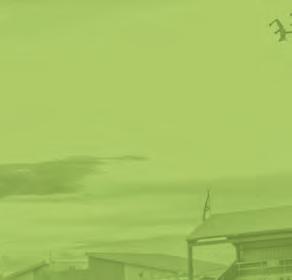











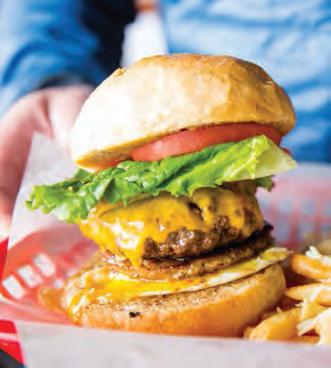

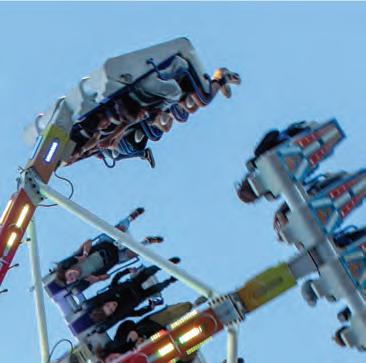


















The lights flicker, the music roars, the smell of goodies and the sound of happy screams fills the air. That’s how you know the carnival is back in town.









During Cattlemen’s Days, the second full week of July, the Colorado-based Wright’s Amusements carnival attracts thousands of youngsters — and former youngsters — who enjoy the rides, cotton candy and funnel cakes.


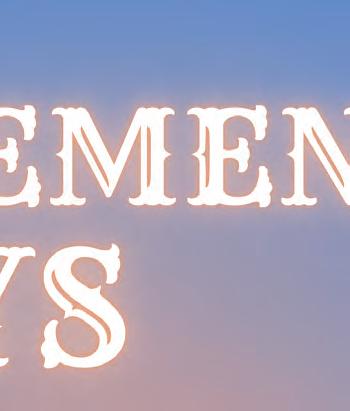



There’s a buzz and a feeling of euphoria that comes with it as people stand in lines to get on their favorite rides.




“When you walk through the carnival and you see the kids and how much fun they’re having and how much they enjoy the carnival, it just makes you realize you’ve got something special for the community,” said Bill Knowles, a 14-year volunteer with the Cattlemen’s Days committee who has been around the celebration all his life. continued on 12

continued from 11

“That translates to everyone. You get to see a 5-year-old kid that is riding his fi rst Shetland pony horse and is absolutely beside himself with big smiles,” he said.

This year, the carnival will be moved from its traditional location to a new spot just north of Hwy. 50 at Spruce Street and Virginia Avenue.
“The county is building affordable housing where the carnival used to be, so that site is no longer available,” Knowles said. “The Catholic Church owns a city block a few blocks north of the rodeo grounds, and they’re good to let us have the carnival there this year. We don’t know what’s going to happen down the road, but we’re trying to find a permanent spot for the carnival to go.”
The good news about the transition is that the carnival is completely mobile — including 14 multifamily trailers for their employees to the generators to make the carnival run. The rides and concession trailers can be set up just about anywhere.



Much like the rodeo, which will feature hundreds of contestants and workers shuffling in and out throughout the competition, the carnival and its staff are modern day nomads. They’ll arrive in Gunnison on Sunday, July 9, and will open the rides on the afternoon of Wednesday, July 12. For the next four days, the rides will hum until the crowd thins down, typically near 11 p.m. Everything shuts down after all the excitement dwindles Saturday, July 15.
From start to finish, the purpose of the carnival is to bring fun to town and help as many people as possible enjoy the community celebration. It’s an indispensable extension of the rodeo, the livestock shows and other exhibits and the Junior Livestock Auction — a piece of Gunnison and a chance for families to share special times together.

(Ted Harbin is the Cattlemen’s Days media director.)


















In addition to rides, the Cattlemen’s Days carnival features food and games.Jacob Spetzler The Ferris wheel provides a bird’s eye view of the 2022 carnival.
When you walk through the carnival and you see the kids and how much fun they’re having and how much they enjoy the carnival, it just makes you realize you’ve got something special for the community.
Bill Knowles Cattlemen’s Days Committee
















 Ted Harbin
Ted Harbin
There is a breathtaking beauty that comes with the Gunnison Valley, tucked neatly into the picturesque Rocky Mountains.
All that is part of the attraction for thousands of people who visit Gunnison each year. For rodeo cowboys and cowgirls, this just adds to the experience they share as they compete at the Cattlemen’s Days PRCA Rodeo, set for Thursday, July 13 to Saturday, July 15, at Fred Field Western Heritage Center in Gunnison.
The event, now in its 123rd year, was recognized as one of the very best the Professional Rodeo Cowboys Association (ProRodeo). Only 20 rodeos nationwide – five in each of four size categories – earn nominations for Rodeos of the Year, and Gunnison’s marquee event was among them in 2022.


It’s quite a distinction for the volunteers that work yearround to produce not only a great community event, but also a worldclass competition that features many of rodeo’s greatest stars.
“There are a lot of reasons why Cattlemen's Days Rodeo deserves to be nominated,” said Andy Stewart, the voice of the rodeo and one of its chief ambassadors. “The committee is always striving to improve this rodeo in any way possible. They continue to spend money where it needs to be spent, and they’re really big on community involvement.”
Cattlemen’s Days was nominated in the Medium Rodeo of the Year category, which is the largest group of competitions in ProRodeo. To be recognized as one of the top five is quite an honor, but it’s one that has been earned over the years.
“It’s pretty cool whenever you can ride somewhere that they’ve been having a rodeo for over 100 years,” said Tilden Hooper, the 2022 Cattlemen’s Days bareback riding champion from Fort
Worth, Texas. “There’s a lot of history. I’m sure every great cowboy I’ve ever looked up to rode here. To get a chance to come here and get to win this rodeo is special to me.”
Hooper is a nine-time National Finals Rodeo qualifier and has been around ProRodeo for 17 years.
“It’s a really good rodeo,” he said.
He hasn’t been in the game as long as Patrick Smith, a two-time world champion heeler from Lipan, Texas. Smith is in his 21st year competing in the PRCA and has 13 qualifications to ProRodeo’s grand championship, which takes place each December in Las Vegas. He earned his most recent trip to the Nevada desert in part by winning the Cattlemen’s Days team roping title with newcomer Tanner Tomlinson of Angleton, Texas.
The committee has “done a great job of adding money to the rodeo, taking care of all the contestants,” Smith said.
“Guys are starting to recognize Gunnison and make sure we’re entered, because it’s that good of a rodeo.”
What makes it so good? First and foremost is that the community goes all out for the celebration and for the rodeo. Add to that a good payout, a great livestock producer and tremendous history, and hundreds of cowboys and cowgirls are making sure they have a chance to compete in Gunnison.


“There’s a lot of nostalgia and atmosphere in that older arena,” Stewart said. “You have a different feel. It takes you back 50-60 years. This is a really special place.
“I hear from a lot of people, and they say it’s a travel destination rodeo. They enjoy the town being so quaint and being able to get on great livestock from Stace Smith Pro Rodeo. It’s an opportunity to slip off in the mountains and enjoy that rodeo.”
With all that going for it, many in the sport suspect Cattlemen’s Days PRCA Rodeo will be back in contention for Rodeo of the Year in 2023 and beyond.
(Ted
Open Thursday to Sunday 4pm to 10pm, happy hour 4-5 daily 970-707-4331 • 206 N Main St • Gunnison, CO 81230 we



Harbin is the Cattlemen’s Days media director.)
There’s a lot of history. I’m sure every great cowboy I’ve ever looked up to rode here.
Tilden Hooper bareback riderRobby Freeman Tilden Hooper
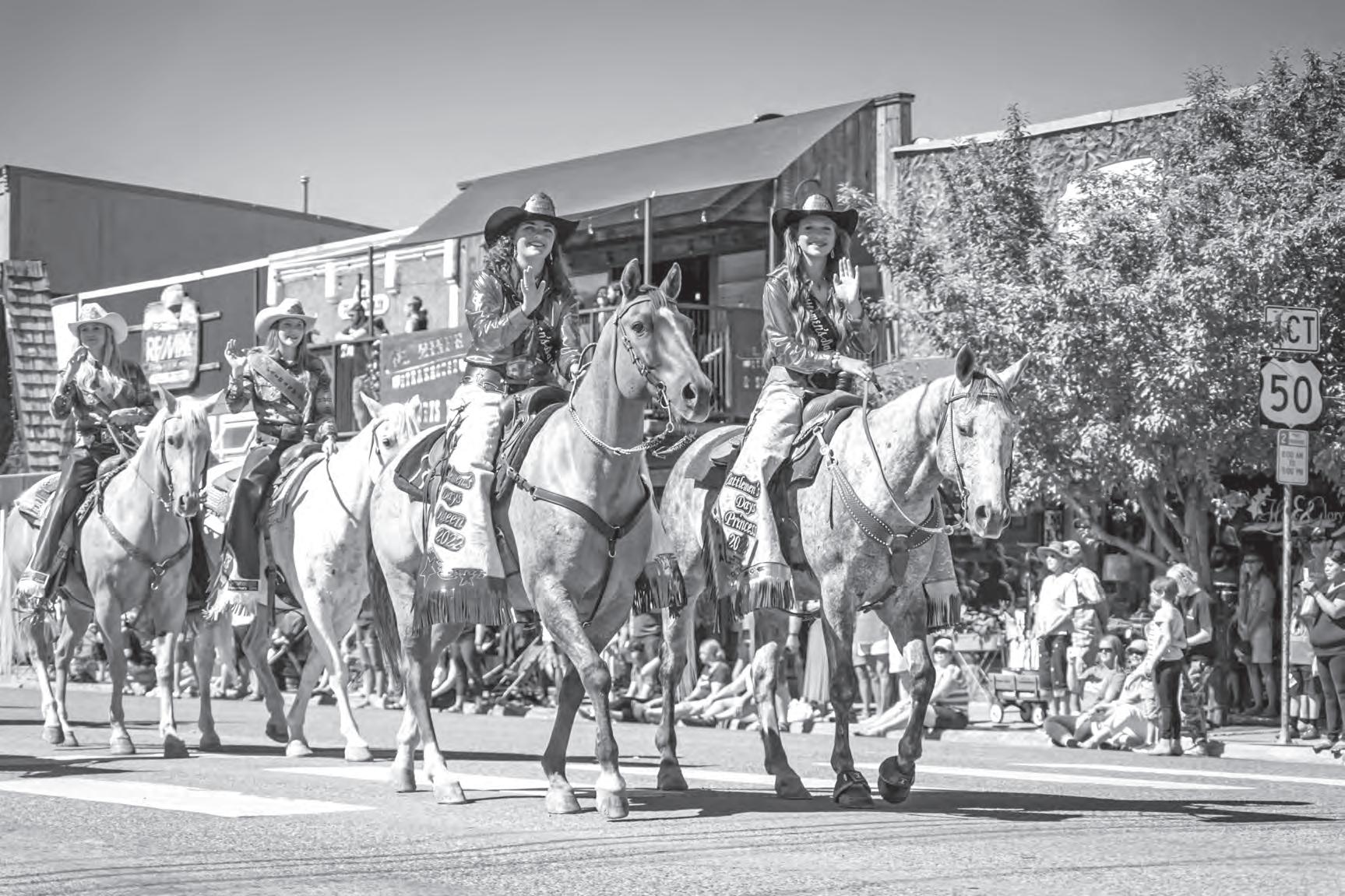











Renfroe s Gunnison. R ge skinniest or t
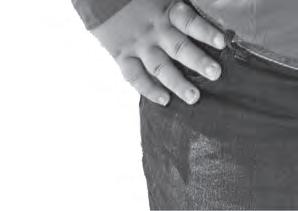




Renfroe spent the first 13 years of her life in Danville, Arkansas, a town about half the size of Gunnison. Renfroe moved to Gunnison in January, 2018.

“I really get to represent the Gunnison way of life and show that not every rodeo queen has to be the skinniest or the prettiest or be on the fastest horse … just bring a little bit of diversity and break the normal standard.”


What do you hope to do after college?







What do you
I really want to go into the ag business and manage my own ranch down in Arkansas where I was raised. I’ve always known that I wanted to be in agriculture, and running my own ranch was the best way to really know what’s going on.
What kind of community work do you do?

What kind of c I was part o school. And h Farmers o How d
I was part of the Junior Cattlemen’s Days Committee from my freshman year to my senior year of high school. And I was very involved with that whether it was checking tickets during the rodeo or coming down here and painting the bucking chutes with fresh green paint. I was in 4-H and FFA, Future Farmers of America, and so we did community service projects where they went to the nursing home, did a food drive for the food pantry here, cleaned up places around town.
How did you get involved with horses and barrel racing?


When I was little, I rode one of my friend’s horse’s lead line, and it was the first time I’d ever really done it. I was probably 5 or 6 at the time and ever since then I knew that I really wanted to get into it. When I moved to Gunnison, there were people that were like, ‘hey, so and so has this horse you can ride’ and ever since I’ve just been into it.

What are some hobbies or activities you do outside of horses and racing that you enjoy?
I have my own little company where I make leather earrings. It’s called Masterpieces by Maddie. I started it in November of this past year. I haven’t really gotten big, but I have been working on little projects here and there with it.
Hughes was born and raised in Gunnison. Her mother was born in California, but was raised in the Gunnison valley. To Hughes, being 2023 Cattlemen’s Days Royalty means upholding a family tradition.




“A lot of my family was royalty for Gunnison in the past years, so it’s really important to me, because I get to follow a line.”
What do you enjoy about 4-H Club and when did you join?
I joined about three years ago, because my mom did it … some of my friends as well. Show is a lot of fun because you get to put all of your hard work together and sometimes you win.
What is your favorite animal to show?
I’ve only shown horses and pigs, but I really like showing horses because it’s a long day. We have a barbecue and it’s a lot of fun.”
What other activities outside of 4-H and horses do you enjoy?
I just ride horses a lot. It’s a lot of fun and you get to have a connection with an animal. The horse that I’m riding now, ‘B’, is really important to me. She’s not my horse, but she’s my grandparents’ horse and I mostl, ride her. She’s my favorite.



What do you want to be when you’re older?
I really want to be a large animal vet or just a vet in general. Ever since I was little, I liked medicine and everything to do with medicine; and I love animals. I really want to go to Colorado State University.
 Abby Fostveit
Abby Fostveit
Herrara is from Kansas, but her family moved to Gunnison when she was 3 years old. To Herrara, being 2023 Cattlemen’s Days Royalty is a new and exciting experience for her.




“I’ve never really held a crown or anything so this is all kind of new. It’s really special for me as well and being as young as my age I get to represent the Junior Miss.”
How did you name your horse Bubba?
I’ve always liked that name for a horse honestly. I was like, the next horse I get I will name Bubba. He’s a chestnut and he has a blaze and two white socks.
Why do you want to be a barrel racer one day?


It just seems really fun, and I like going really fast. I haven’t taught my horse the pattern yet, but I will get to that.
When you grow up, what job would you want to have in the future?
I really want to be a horse trainer because it seems really fun.
What is your favorite thing to learn about?
I’m included in Lost Miner Equestrian Ranch and we’ve gotten to quiz. I just like to learn about horses, like what’s their temperature, pulse and stuff like that.


































What is a hidden talent or a skill that you are proud of?
Jumping with my horse. I have to give my horse a lot of encouragement. I use my legs, I cluck and I also have a little crop.

The Cattlemen’s Days royalty are an amazing group of young women who serve as our frontline ambassadors in the rodeo and western world. Leaders in crowns & sashes, they are always smiling and spreading the joy and fun which is Cattlemen’s Days!
President Mike Dawson Cattlemen’s Days Committee
David
and LaDonna McLainBehind every great person is a great partner, and the McLain's exemplify that. David and LaDonna McLain have been married 53 years and were friends 10 years before that. The two of them understand each other, look after each other and are obviously still much in love.
David's great-grandfather, Alexander McLain, moved to the Quartz Creek Valley in 1879 as a miner and then became a rancher. The current McLain ranch was established in 1908 by JJ McLain, David's grandfather. They were lucky to have the Denver South Park and Pacific Railroad run through the meadows in the early days from the Alpine Tunnel for transportation.
As with most ranching families, the McLain's had to utilize their other talents to supplement their ranching endeavors. David is the son of Jack and Louise McLain and was born on the family ranch along with brother Carl McLain and Nancy (Crawford) McLain. David became a hunting guide, logged for use in their sawmill and built log homes. In addition, the family enjoyed building bridges, moving homes or any other project they could come up with.
Jack and Louise purchased the ranch in 1952 and David and LaDonna purchased the family ranch in 1988. Ranching for the McLain's involved calving, cattle management, haying, irrigating, machinery maintenance and wildlife compatibility.


LaDonna, daughter of Billy Joe and Virginia Lamberson, was raised in the Quartz Creek Valley. LaDonna and her parents owned and operated the Sportsman's Resort in Ohio City and Western Plumbing and Heating in Gunnison. David started school in Ohio City, and both David and LaDonna graduated from Gunnison High School.
They started their family in 1971 on the family ranch. Teri (Haus), Justin, and Lorie (Fuller) were born and raised on the family ranch and graduated from Gunnison High School as well. They were involved in the activities of ranching, including moving cattle from the ranch to Taylor Park for the summer. They irrigated, helped hay
TEST YOUR KNOWLEDGE!
and milked cows. The siblings also help at night during calving season.
David and his family upgraded buildings, expanded irrigation, cattle production, hay meadows and sustainability on the ranch. Justin and Merdeth Mclain are current activity owners of the ranch with help from daughters Katelin and Marisa. They help irrigate, move cattle from ranch to Taylor Park by horseback and enjoy helping with the haying.
The McLain's enjoyed participating in the Quartz Creek Improvement Association since 1965 and being part of the Taylor Park Cattle Association.
David served on the Gunnison school board for several years. David is a member of the Gunnison Stockgrowers Association. He was awarded an honorary lifetime membership in 2022. Also they are both members of Pioneer Museum.
The McLain’s used to have open invitation pig roasts. That was hard work and also fun to see the neighbors new and old, they said.
LaDonna has been a member of Gunnison Valley Cattlewomen for many years, dealing with the promotion of the cattle industry. She enjoys cooking for the ranch crew and riding horses with her family moving cattle. Now that they live closer to town, she enjoys making quilts, planting and harvesting their garden and visiting with neighbors.
Joe DixonWhile traveling through the Gunnison area in 1972, Joe Dixon’s car broke down on Monarch Pass. He and his wife, Pamela, were forced to go back to Gunnison where they had celebrated their 10th anniversary. They liked Gunnison a lot, so they moved from their home in Denver where Pam grew up. Their first winter experience in the valley almost chased them back to Denver, but they stuck it out and planted deep roots here.
Q3.
What shape is the pattern taken by a barrel racer known as?
Joe was born in Little Rock, Arkansas. He lived with his grandparents when his dad was in the U.S. Army and later moved to Denver. His mother held a Doctor of Nursing Practice degree and taught school in Texas. That’s where Joe’s love for rodeo came from. He went to business college and attended both the University of Colorado and Denver University along with Western State College. He worked on the Titan II and III missiles for Martin Marietta and the U.S. Air Force, where he garnered several awards for excellence.
Pam became the senior real estate appraiser for Gunnison County, a job she had for 27 years.
Seeing the increase of the use of home electronics led Joe to go to night school for five years to learn about them and add to his business degree. From there he went into the repair business in Gunnison.
In 1975, Joe started putting in a new sound system for the Cattlemen’s Days Rodeo and Livestock Show and was offered committee membership in exchange for his labor. His working relationship with the committee became an enduring commitment, and he has been a member for nearly 30 years.


Joe is quick to say he has had tremendous help from other committee members over the years digging ditches for wiring and stringing wire. Joe has, since 1994, operated a business providing event tents, including those needed for Cattlemen’s Days hospitality, Tough Enough to Wear Pink and injury diagnostics for the cowboys during the rodeo.
One of the most loved events during Cattlemen’s Days is Cowboy Poetry that Joe had a role in creating. Today, renowned local musicians Evelyn Roper and Chris Coady work with Joe to put on the cowboy poetry event. In addition, Joe helps organize auditions and select performers to sing the national anthem at the rodeo each night.
“I am proud of being a director and brag about the family of directors; we are the best there is. We all got behind the Tough Enough to Wear Pink program, which is the largest fundraiser for breast cancer in the nation,” Joe said.
It has been 51 years since Joe and Pam came here for their 10th anniversary. In the meantime they’ve raised five children and welcomed seven grandchildren and six great-grandchildren. We are glad they stayed.
(Source: Cattlemen’s Days.)
TEST YOUR KNOWLEDGE!
Q4.
A calf roper has a piece of rope woven within his/her belt. What is this called?
I am proud of being a director and brag about the family of directors; we are the best there is.
Joe Dixon Cattlemen’s Days Committee





















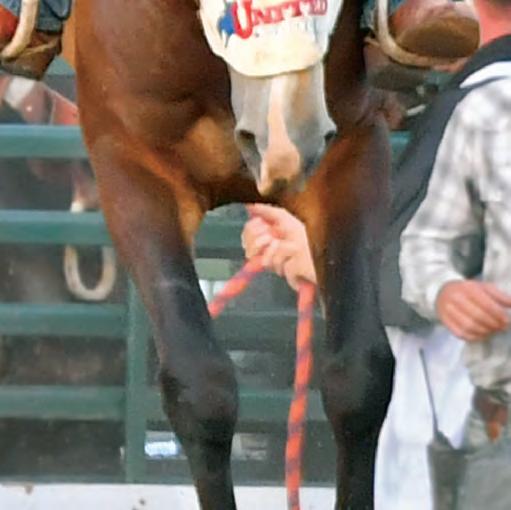




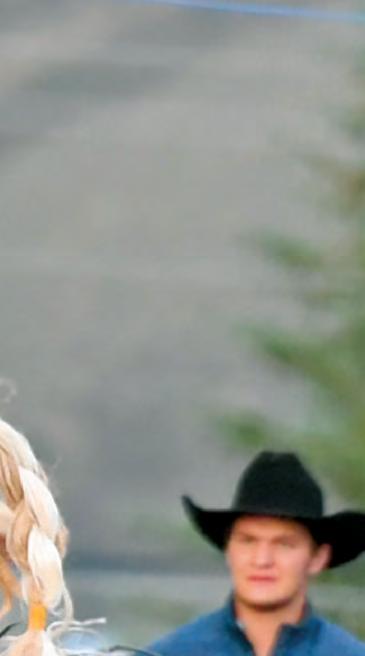





When he was 18 years old, Glenn George weighed his options. He wanted to attend college, but money was sparse. He’d spent the winter pitching hay, then he and six other young men from Gunnison decided that joining the U.S. Marine Corps was their best option. The country was engaged in the Korean War, and the military branches needed people to serve.
“I’d never given it much thought, but it seemed to me that I should try it,” George said. At age 90, he is still active and possesses a strong mind and great recollection. “With the conflict in Korea, I felt like I could do my part.”
Gunnison has always been his home. His service is part of his legacy, and the community has supported him throughout his lifetime. Cattlemen’s Days will con-

tinue doing so on Friday, July 14 in a special Military Night tribute during the rodeo performance. Active duty service members and veterans will be admitted to the rodeo for free that night.
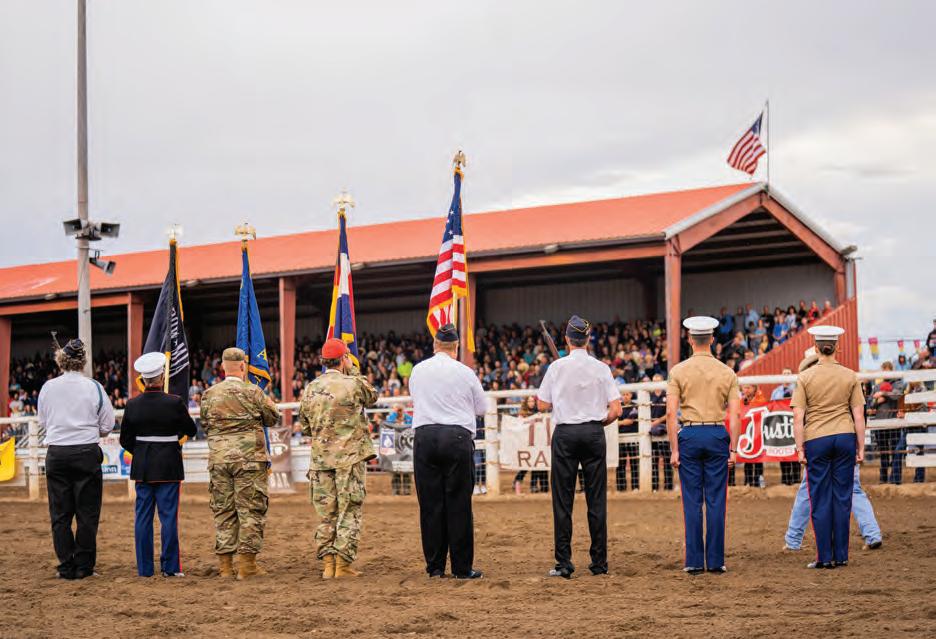
“We are free because of those that have served or are serving,” Kevin Coblentz, a longtime member of the Cattlemen’s Days volunteer committee said. “We have to honor those people, whether they’re living or they’ve suffered the ultimate sacr ifice. When we were looking at ways to celebrate members of our community, having a military night was a no-brainer.”
Over his lifetime, George has taken part in many Cattlemen’s Days celebrations in one capacity or another, including serving on the board for 25 years. Whether he was just enjoying the carnival or clerking the junior livestock auction, Cattlemen’s Days has always been a special time for him, he said.
“I was pretty much born here in Gunnison,” he said.
“My mother and I went to Salida to have me born. We rode the old narrow gauge railroad from Gunnison to Salida, then rode it back. Twenty-three years later, I helped dismantle that same track.”
After serving in the Marines from 1951-54, George returned home and attended college on the G.I. Bill, which helped ease the financial burden. He built a life and raised a family; he and his wife, Melva, still live on the edge of town.
Now, his years in the service and the sacrifices he and others made to protect the country will be honored by his hometown, his family and his friends.
“I think it’s very appropriate,” George said. “Our small community has had a lot of vets, and they’ve supported the military very well over the years. I think this will fit perfectly with that.”
(Ted Harbin is the Cattlemen’s Days media director.)
A local honor guard presents the colors for the singing of the national anthem during the 2022 Cattlemen’s Days. Mackenzie Bode





















 Abby Fostveit
(Left to right) Rudy Faulds, Jace Hildreth and Kelly Hildreth stand in front of Hildreth’s inventory of horseshoes.
Abby Fostveit
(Left to right) Rudy Faulds, Jace Hildreth and Kelly Hildreth stand in front of Hildreth’s inventory of horseshoes.
Local farrier Kelly Hildreth sat in an old chair in the shade outside his VanTuyl Ranch house. He grew nostalgic as he recalled 45 years of shoeing horses in the Gunnison Country.
Hildreth learned everything he knows from his uncle Bud. In Hildreth’s adolescent years, Bud mentored him to be a good farrier and an even better horseman, he said. Soon, Hildreth went from holding horses for Bud, to shoeing for him. Bud passed away when he was 17 years old.


Hildreth keeps Bud’s legacy alive by passing down the knowledge through generations of his family — a testimony to the timeless nature of Bud’s talents. As the third-generation shoer in the family, Hildreth


“On top of just being a farrier, we’re all horsemen,” Jace said. “We’ve been raised around it, we raise a lot of horses,

Farriers specialize in horseshoeing, trimming hooves and maintaining the overall health of the horse’s hooves and gait. To the Hildreths, the practice takes on a more sentimental meaning: it’s about the wellbeing of the horse.

“We feel like we’re helping the horse,” Kelly said. “It’s hard work, but it’s real satisfying.”
Getting under a horse to trim and shape their hooves, as well as fit and nail a horseshoe in, requires hours of standing, bending and squatting. Farriers must hold the horse’s legs and feet in place. Jace said that horses should be trained before seeing a farrier, for the safety of everyone

“Everybody wants to be better, and that comes with handling and training before we ever get there.” Jace said.





A farrier learns over time how to make the experience more comfortable for any horse. Roger Skelton, a former farrier who worked in Montrose, said that working with a horse requires patience, empathy and a gentle hand. Skelton boils the relationship down to predator and prey.
“I rarely looked a horse in the eye, because that puts pressure on them,” Skelton said. “And if you don’t know a horse, pet them with the back of your hand instead of the front of erence.”
Depending on where they work, farriers often travel to shoe horses. Skelton said that traveling was a challenge, but he reminisced on the beauty of driving through Colorado’s breathtaking landscape. Being a farrier in Gunnison meant shoeing horses down past Lake City and up to Crested Butte. Jace travels as far south as Arizona during harsh





“What I should have done was taken a photography class,” Skeleton said. “And then when I got through shoeing, printed a book on places I shod horses. Coffee table book, e work of a farrier is rooted in tradition, but the craft has changed dramatically in Kelly’s lifetime. When he started shoeing horses 45 years ago, there was only one nail company and one horseshoe company, he said. Now, there er styles of shoes beyond the

Full service electrical contractor serving the Commercial, Industrial & Residential needs of the Gunnison, Crested Butte and Lake City communities.
EC Electric can meet your electrical needs for any project, whether large or small.
continued from 27











Horses need shoes depending on their environment. Horses in a soft pasture just need trimmed, whereas horses that endure harsher environments such as gravel and rock need shoes. Skelton said that steel shoes are the cheapest and most versatile option amongst all of the new models of rubber and plastic shoes.


“A steel shoe, you can shape.” Skelton said. “A rubber shoe, you can't do that.”


























A farrier is always learning. The Hildreth’s believe learning is an integral part of bettering the lives of both the farrier and the horse. The best way to learn is through challenges, which are an unavoidable part of the job. However, these also bring rewards.



“What motivates me is to be able to shoe with my son. It really keeps me going.” Kelly said.
Still sitting in the shade on his ranch, Kelly flipped through photos of his 7 year old grandson working on a horse. He said the boy would be the fifth-generation shoer in the Hildreth family.

(Abby Fostveit can be contacted at 970.641.1414 or intern@gunnisontimes. com.)





































ARM JERKER: A rank animal sure to give a memorable ride.

BEAR DOWN: The mental preparation a cowboy does in the chute just before nodding for the gate to swing.
BREAK THE BARRIER: Usually used in roping events, breaking the barrier refers to when a rider fails to give the calf or steer the appropriate time for a head start. Riders who break the barrier are given a 10-second penalty.



BRONC: Sometimes referred to as a bronco, broncho or bucking bronco, it is an unbroken range horse. It is known for its tendency to buck and throw riders.





BULLDOGGING: Another way to reference steer wrestling. Similar to team roping and tiedown roping, one rider known as the “hazer” guides the steer toward the “bulldogger,” who attempts to wrestle the steer to the ground as quickly as possible.
BULLFIGHTER: The preferred word for “rodeo clown.”
CAN CHASER: An inadvisable way to refer to barrel racers.
COWBOY POKER: For those who are avid watchers of the series “Yellowstone —” yes, Cowboy Poker is a real thing. It involves four individuals playing a game of poker at a table in the middle of the arena. To make matters more extreme, an angry bull is released into the arena with them. The last person still sitting at the table wins.
DALLY: Refers to wrapping the rope around a rider’s saddle horn after roping a calf. To dally is very important for a header to do because otherwise they could injure their fingers or hand.


DINK: An animal who bucks very little and that tends to just kick and run around the arena.






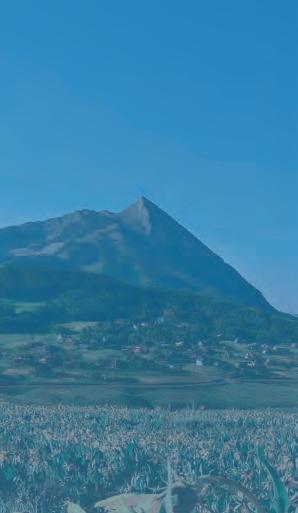
DUCK SPINNER: A bull with a predictable bucking pattern that cowboys hope to draw.

FINED UP: Describes a cowboy who has neglected to pay his fees.



FLANK STRAP: A strip of leather, often lined with fleece, that is placed behind the horse’s rib cage. While waiting for the chute to open, the flank strap is loose around the animal’s body. When the chute opens, the strap is pulled tightly, which causes the animal to buck.

HEADER In team roping, the header is the first rider out of the box. The header is responsible for roping the head or front of the steer, usually around the horns.

Every sport has its own special lingo that signifies insider knowledge.To fit in at the fairgrounds, here are some words and phrases you need to know:
“DALLY” “HOOEY”
“NANNY SLAMMER”
HEELER: This is the second rider in team roping. After the header ropes the front of the steer and pulls it into a new direction, the heeler must rope both hind legs. Only roping one hind leg results in a five-second penalty. Roping the hind legs before the header changes the steer’s direction results in disqualification.
HOOEY: In the tie-down event, a hooey is the type of knot that is used to finish tying the calf’s legs. This is the last thing that must be done before the clock stops.

HOULIHAN THROW: Similar to a backhand throw, the Houlihan is a one-swing flip shot that a rider throws as the calf passes the horse's ears.



LET ‘R BUCK: One way for roughstock riders to tell the gate latch puller to get on with it.





NANNY SLAMMER: What to call goat tiers if you want to make them mad.
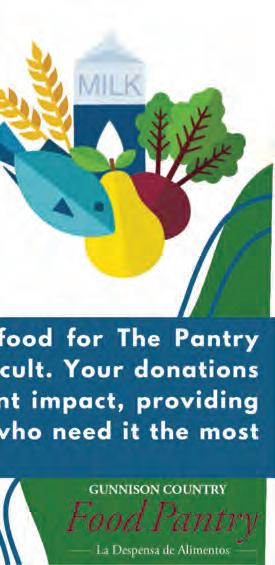

MARK OUT: To get spurs on the neck with the first jump out of the chute.

RANK: An adjective used to describe a particularly tough bucking bull or horse.




ers to tel p whic





ROUGHSTOCK: Refers to the events in which individuals ride bulls or horses. All of the other rodeo events are timed events.
WEEKEND WARRIOR: A rodeo cowboy with a day job.


“Reigning over the Cattlemen’s Days festivities, July 19-22, will be Miss Cattlemen’s Days Lenna Redden (center) and her two attendants Nancy Stahly (right) and Barbara Weaver. The threesome has been traveling to lots of rodeos and riding in parades to promote Gunnison’s midsummer celebration — in addition to putting up Cattlemen’s Days Rodeo posters like this one on the Gunnison Newspaper’s Inc. window.”


In Gunnison County, we are proud of our robust 4-H program. Nearly 150 local youth eagerly dive into 4-H club activities, community service, project work and the fair every year. All youth ages 5-18 are welcome to join.
Working alongside committed adult volunteers, young people discover a host of new interests. They also forge lifelong friendships, develop a sense of belonging and practice life skills like public speaking. But that is only part of the story. Some of the most memorable 4-H experiences actually take place outside Gunnison County.
Many of our members travel to state and regional 4-H events each year. At these affordable out-of-town conferences, our youth practice personal responsibility. They make new friends and open their eyes to other communities. They literally step outside their comfort zone.
In April this year, 12 of our local members chose to attend the 4-H District Retreat in Delta. The single-day event allowed members as young as 8 to experience the fun of a 4-H
road trip. They joined members from other Western Slope counties for games, community service projects and swimming at the pool. The youth returned home tired, happy and confident.
Additionally, more than a dozen older 4-H members traveled to multi-day leadership events in Glenwood Springs, Denver and Fort Collins this year. These conferences are famous for quality educational workshops as well as dances, escalators, trips to the state capital and other big-city experiences. 4-H members even had the fun of unloading Gunnison hay that was being delivered to the Denver Zoo. As a thank you from the zoo, our 4-H youth were treated to a VIP tour of the rhinoceros facility.
If the fun is not enough, there are also plenty of career-building opportunities available through state 4-H events. Youth may travel to compete in academic contests such as the Horse Bowl or the Consumer Choices Skilla-Thon. Alternatively, they can seek official leadership duties by running for district or state offices. State 4-H officers build skills in event planning as they help put on the various 4-H annual conferences. Since Colorado 4-H is affiliated with Colorado State University, our

members benefit from CSU resources.
This May, five of our 4-H youth attended an exciting veterinary science camp at the new CSU SPUR campus on the National Western Stock Show complex. Members practiced skills such as suturing wounds and performing first aid. They also witnessed live equine therapy sessions and small animal surgeries conducted by experienced veterinarians. Throughout the camp, CSU vet students and seasoned veterinarians were on hand to mentor the youth about career options. Our Gunnison contingent bubbled all the way home about what they had learned.
Young people in our community are lucky to have many opportunities for community involvement and personal development. With enrollment fees of just $25 per child, the 4-H program offers an especially affordable option. Scholarships are available, so 4-H is not out of reach for any family. Gunnison County Extension invites local young people to consider becoming a member of 4-H.
Opportunity is available to everyone, at home in Gunnison County and beyond.
(Perri Pelletier is the Gunnison County 4-H agent.)
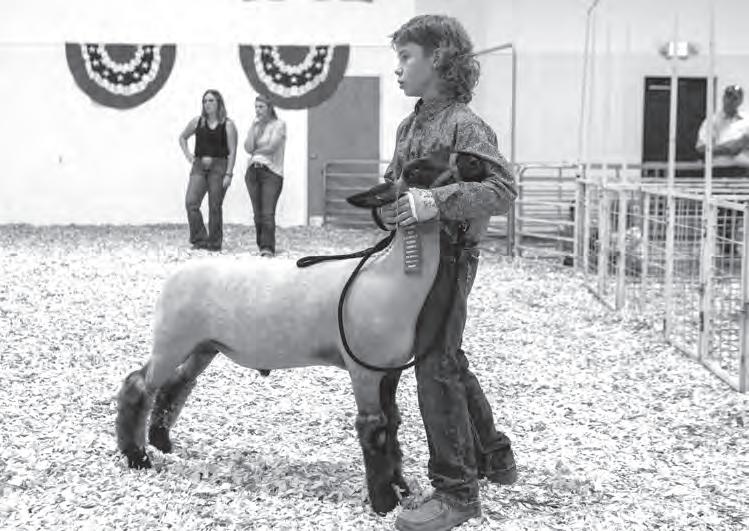
 Bella Biondini
Bella Biondini




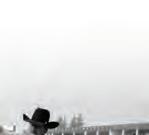
































OPENS
JULY 7
GUNNISON ARTS CENTER

CAFE GALLERY RUNS THROUGH JULY




HALF OF ALL PRINT SALES DONATED TO TOUGH ENOUGH TO WEAR PINK
 MACKENZIE BODE
JACOB SPETZLER
BELLA BIONDINI
MACKENZIE BODE
JACOB SPETZLER
BELLA BIONDINI






















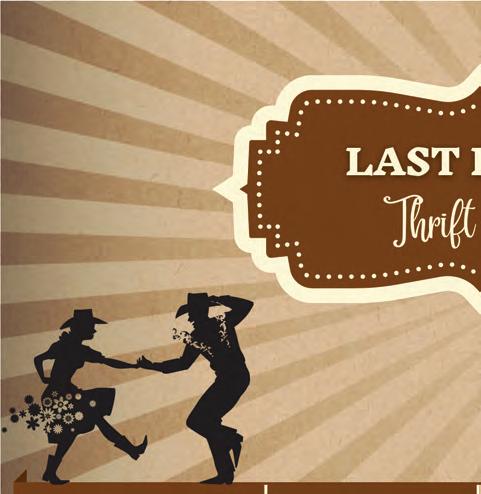




Completely surrounded by the Gunnison National Forest, the attached land sweeps upward into aspen and dark timber and continues for thousands of acres in each direction. A such an "in holding" with secured year round access – this the ranch the views can only be described as spectacular, encompassing mountain ranges to the north, south, east and west. Nearly a mile of Needle Creek runs through the
Reservoir within walking distance from this 160 fenced acres. At an elevation from 8,500 to 9,000 feet, Needle Creek ribbons through the middle of the valley with deeded water shares from Needle Creek Reservoir for irrigation purposes.



Improvements include four phase underground electric, domestic well that supplies all three cabins and two bath main house, two guest cabins.
private valley parcel full with abundant wildlife. While qualities of this in-holding within the Gunnison National resort and recreational communities are Crested Butte, Lake City and Monarch Ski Area.








boasts a most private Mecca for the avid outdoorsman
